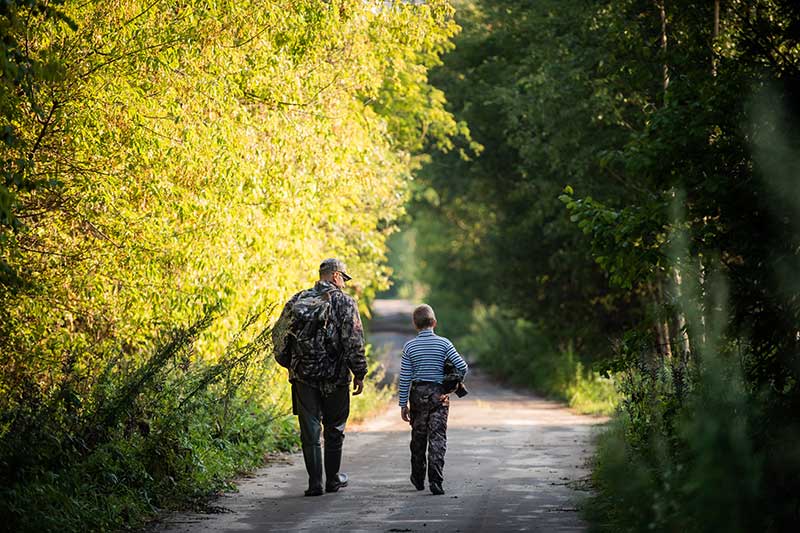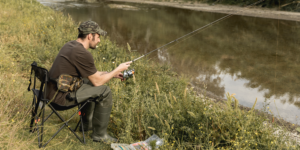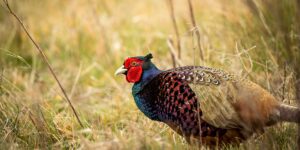Introducing our youth to hunting is more important than ever. In general, various license sales are dropping across the country. The future of hunting depends on introducing kids to the outdoors and recruiting beginners to get involved in the sport.
There are, of course, several pursuits to choose from when looking to get a youth hunter started. Bowhunting may not be where they start but it’s a great goal to set and something that an adult mentor and the youth hunter shouldn’t be intimidated by. With the right instruction, progression and equipment, young hunters can successfully bowhunt and create fantastic outdoor experiences and memories. Here’s a few tips to get your youth hunter on the right track and set a solid foundation for a future in bowhunting.
Why limit yourself to public land when there are millions of acres of private land to explore.
Tips

1. Try other types of hunting before bow hunting
Introduce your youth hunter to other forms of hunting before they graduate to bowhunting. Take them turkey hunting with a shotgun, hunt deer with the proper firearm or even take them bird hunting. Get them exposed to the general ins and outs of hunting. Let them experience the excitement of a deer within shooting range or a gobbling tom turkey in the decoys. Teach them the basics and get them enthused about hunting in general.
2. Get the right bow
Once you feel they’re ready to test the archery waters, it’s essential to set them up with the proper equipment. Having a reliable archery shop with a knowledgeable staff can be a huge resource throughout this process. For young archers, the first and most important piece of equipment is of course the proper bow. Several of today’s bow manufacturers make excellent youth models, giving you options when selecting what’s right for a youth hunter. The proper fit of the bow involves several factors with the most important being draw length and pull weight. Bowhunting is difficult even for the most experienced hunters, which means you need to give a youth hunter every possible advantage to succeed and this starts with a bow that fits their draw length and is set to a draw weight that is appropriate for their arm and shoulder strength. Youth archers need to feel comfortable and confident with their setup.
3. Get the right arrows
The next important piece of equipment is the combination of the arrows and broadheads. Assuming that the draw weight and draw length of a youth hunter’s bow are relatively low, not nearly as much speed will be generated in arrow flight. Effective hunting can still be achieved with some extra thought put into arrow and broadhead selection. The challenge with lower speed and less power is lack of penetration when an animal is hit. To combat this, purchase a smaller diameter arrow and a cut on contact broadhead. Avoid mechanical broadheads and lean towards a common fixed blade head with 3 or better yet, 2 blades.
4. Practice, practice, practice
Assuming all of the other bow accessories are properly fit and comfortable for your youth hunter; products like the release, bow rest, bow site, wrist strap and entire system as a whole, it’s time to practice, practice, practice. A first time bowhunter should spend a great deal of time at the practice range shooting targets before they head afield into live animal situations. Have them shoot all types of targets like block style and especially 3D deer or animal targets, all while teaching them proper shot placement on the body of a deer or whatever animal you plan to pursue. Keep them shooting at ranges of 20 yards or less. This will build confidence and realistically mirrors the only types of yardages that they should consider shooting in a hunting situation. Young archers should become 100% confident and comfortable with their bow before hunting.
5. Hunt where there are plenty of animals
Now that your young bowhunter has put in several days and hours becoming comfortable with their bow on the practice range, it’s time to hunt. We realize this is easier said than done and not all hunters have access to perfect hunting land, but do your best to put young bowhunters in areas that are high in target species density. If you’re deer hunting or even turkey hunting, do your best to hunt where there’s plenty of deer and turkeys! This will benefit a young person in several ways. Seeing multiple deer will keep them excited and allow them to experience various situations.
They can get repetitions considering if a deer is within range, if a deer is properly broadside, staying relatively calm and concealed when deer approach and so on. While in the stand or blind, have them draw their bow for practice. They could even come to full draw on an animal that they might not intend to shoot. This provides great experience doing these things when they’re nervous, cold or bundled up in more clothing than they’re used to. All of these things are hard to replicate on the practice range but realities when they’re actually hunting.
The hassle free way to monetize your acreage.
6. Be patient
Depending on the demeanor of a youth hunter, some may become anxious and overly aggressive in an effort to send an arrow at a deer. Push them to be extremely patient and wait for the exact shot that they should be taking. Close in range, broadside and without obstructions. This teaches them several great hunting lessons, most importantly being to take ethical shots. Again, set them up for success. The treestands or blinds that they hunt should cater to 10-15 yard shot opportunities that can take place in large shooting lanes. The last thing you want a first time bowhunter to experience is wounding an animal by taking a risky, impossible shot that they aren’t comfortable with. Do everything in your power to make their first bow kill smooth, fun, and memorable. You don’t want to create bad habits early in their bowhunting adventures. This isn’t easy because bowhunting isn’t easy but there are things we can do to put the odds in their favor.
7. Don’t be to picky with your targets
We said to be patient, but also don’t be picky when selecting the deer to shoot. Assuming that the youth hunter is 100% ready to shoot an arrow at a live animal and the deer is providing the perfect shot opportunity, allow them to take the shot whether it’s a small buck, doe, yearly or anything else that is of course legal to shoot within the area you’re hunting. Many experienced bowhunters have developed standards for the size of buck they are willing to shoot. Throw this out the window when you’re in the field with a young hunter. Any deer is a trophy to them and you at this point in their hunting career, so assuming they are ready and the opportunity is there, never hold them back because of the size or age of the deer.
8. Use bow hunting to teach them more hunting skills
Even though bowhunting is a difficult sport, in many ways it’s perfect for teaching a young person everything they need to know about hunting. Take the opportunity to do this as you introduce them to bowhunting. The fact is that it’s not easy to get a whitetail deer or any other target species into bow range. In order to do this, all of your preparation, tactics and skills need to be top notch. This presents a hunting mentor with the opportunity to teach youth hunters about the importance of things like off-season archery practice, pre-season scouting, strategies for placing treestands and blinds, scent control and the many other factors and skills that hunters develop as they become more experienced. We’re convinced that the more youth hunters know and understand about all of the elements of hunting, the more likely they are to latch onto the sport and remain an outdoorsmen or women for life.
Youth Bow Hunting on Private Land
Step 5 above mentions hunting where there are plenty of animals. This can be difficult to do consistently on public land, where you’ll have more competition and more skittish animals This is why private land hunting could be a great option for your young hunter. Access is opening up across the country for private land hunting of all types and there’s nothing quite like having an empty field or forest all to yourself for the day to hunt.
FAQ
What age can you start bow hunting?
The legal age to start bowhunting may differ depending on the state you are living and/or hunting in. Some are 10 years old, others don’t have a minimum. Specifically in regards to bowhunting, age isn’t necessarily as important as the individual’s physical strength and mental understanding of hunting. Most states have a minimum draw weight that is required to make a bow legal for use while hunting. This is typically 30-40 pounds. This bow weight is what is felt is required to ethically harvest an animal.
What pound bow should a 12 year old use?
This completely depends on their physical strength. A bowhunter should use the highest draw weight that they can comfortably and confidently pull. Again, minimums are often in place to make a bow legal for hunting. This may be 30 or 40 pounds. If they can handle a higher draw weight than this, more power to them.
How do I know my child’s draw weight?
The best way to determine the proper draw weight and draw length for a youth hunter is to visit your local archery shop. They can provide you with test bows or other draw simulations that will give you an idea of what they’re comfortable with and at what point a draw weight is getting too high.



